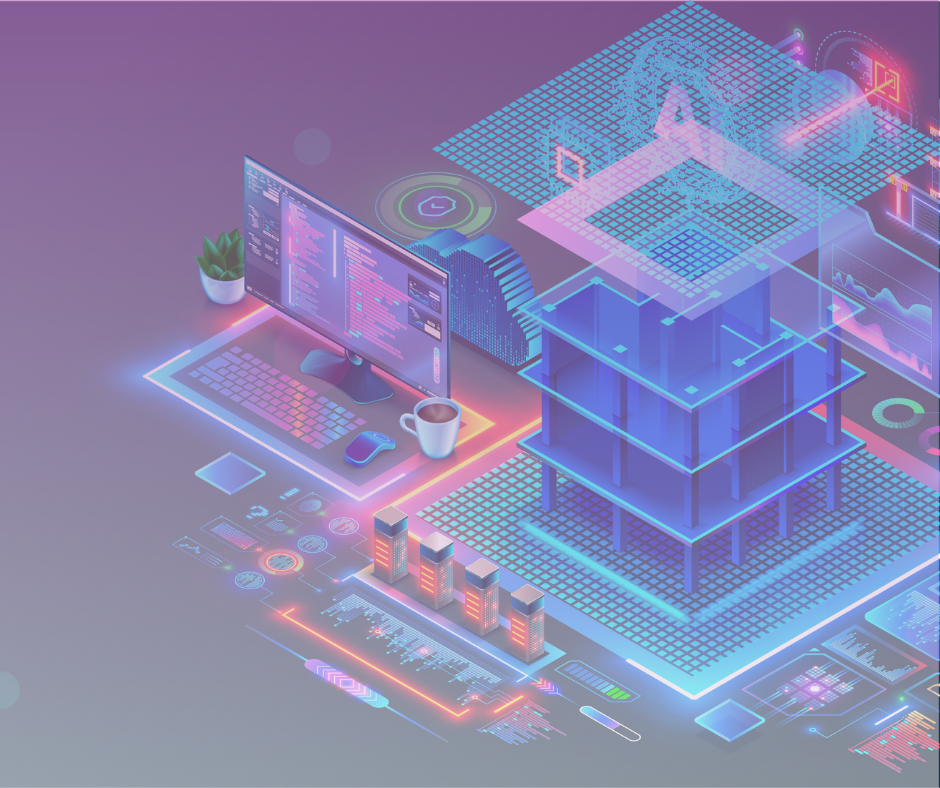Architecture firms face unique technological challenges that can significantly impact their design workflows, client communications, and project delivery. Architectural practices depend heavily on sophisticated software, robust data management, and seamless collaboration tools to bring their creative visions to life.
What Makes IT Requirements Different for Architecture Firms?
The technology needs of architectural practices differ substantially from typical business environments. Architects work with resource-intensive design software like AutoCAD, Revit, and 3D rendering applications that demand powerful hardware and optimised network performance. These applications often generate massive file sizes that need to be shared between team members, consultants, and clients regularly.
Construction project timelines don't wait for technical difficulties. When a design deadline approaches, system downtime can cost more than just productivity - it can damage client relationships and impact project schedules. This reality makes reliable IT infrastructure absolutely critical for architectural firms of all sizes, regardless of whether they're small boutique practices or large commercial firms.
Storage requirements present another unique challenge. Design files, project documentation, and client communications accumulate rapidly, often requiring years of retention for legal and reference purposes. Traditional file storage solutions frequently prove inadequate for the volume and accessibility requirements that modern architecture practices face.
How Can Managed IT Services Transform Your Architecture Practice?
Technology support services offer architecture firms the opportunity to focus on what they do best—designing exceptional buildings—while leaving the technical complexities to specialists. This approach can be particularly valuable for smaller practices that cannot justify hiring full-time IT staff but still require enterprise-level technology support.
Managed service providers understand the specific software and hardware requirements of architectural workflows. They can optimise networks for large file transfers, ensure design applications run smoothly, and provide rapid response when technical issues arise. The difference in productivity between a well-maintained and poorly managed IT environment can be substantial.
Security considerations have become increasingly important as cyber threats target businesses of all sizes. Architecture firms handle sensitive client data, proprietary designs, and confidential project information that requires protection. Professional IT management includes robust cybersecurity measures that many firms struggle to implement effectively on their own.
Cost-effective access to enterprise-level knowledge and tools represents another significant advantage. Rather than maintaining expensive in-house expertise, firms can access specialised technical capabilities through service arrangements that scale with their needs.
Which Technology Challenges Do Architecture Firms Face Most Often?
Architecture practices encounter several recurring technical issues that can significantly impact their operational efficiency:
- Software Performance Issues
- Design applications require significant system resources and regular updates
- Slow-running programs or unexpected crashes severely impact productivity
- Many architectural teams spend valuable time troubleshooting technical problems rather than working on designs
- Resource conflicts between multiple design applications can cause system instability
- File Sharing and Collaboration Difficulties
- Modern architecture projects involve multiple stakeholders who need access to current design files
- Email attachments quickly become unwieldy for large design files
- Version control problems can lead to costly mistakes and project delays
- Cloud-based solutions offer improvements, but they require proper setup and management to work effectively
- Data Backup and Recovery Concerns
- Design files represent thousands of hours of professional work
- Losing project data due to hardware failure, accidental deletion, or cyber attacks can be devastating
- Reliable backup systems require ongoing attention and regular testing to ensure they function when needed
- Recovery time objectives must align with project deadline requirements
- Network Performance Problems
- Slow network speeds affect everything from file transfers to cloud application performance
- Architecture firms often struggle with bandwidth limitations that impact their ability to work efficiently with large design files
- Poor network configuration can create bottlenecks during peak usage periods
- Remote access performance issues can limit flexible working arrangements
What Benefits Do Professional IT Solutions Provide?
The advantages of professional technology management extend beyond simply fixing problems when they occur. A comprehensive approach delivers multiple benefits:
- Proactive Problem Prevention
- Continuous monitoring and maintenance can prevent many issues before they impact operations
- This approach typically proves more cost-effective than reactive problem-solving while reducing stress for architecture teams
- Regular system health checks identify potential problems early
- Seamless Maintenance and Updates
- Professional IT management includes regular software updates, security patches, and system optimisation
- These routine tasks consume significant time when handled internally but become seamless when managed by specialists
- The cumulative time savings can be substantial over months and years
- Enterprise-Grade Technology Access
- Cloud computing platforms, advanced backup systems, and professional networking equipment might be cost-prohibitive for individual firms
- Service providers can offer access to these capabilities through shared infrastructure models
- Firms benefit from enterprise-level features without enterprise-level costs
- Enhanced User Competency
- Training and support services help architecture teams use technology more effectively
- Many firms underutilise available software features simply because staff members haven't received proper training
- Professional IT providers often include user education as part of their service offerings
- Improved software proficiency can dramatically increase design productivity
How Does Cloud Technology Benefit Architectural Workflows?
Cloud computing has transformed many aspects of professional service delivery, and architecture firms are no exception. Remote access to design files and applications allows team members to work flexibly while maintaining productivity. This capability proved particularly valuable during recent years when remote work became necessary, and field access to project files now enables on-site decision-making and real-time updates.
Collaboration improvements through cloud platforms can streamline project coordination between architects, engineers, and consultants. Real-time file sharing and communication tools reduce the delays that often occur in traditional project workflows. Client presentations and reviews can also be conducted more efficiently through cloud-based platforms, while version control becomes more reliable with centralised file management.
Scalability represents another significant advantage of cloud solutions. Architecture firms experience fluctuating technology demands based on project cycles and seasonal variations in workload. Cloud services can adjust capacity as needed without requiring significant capital investments in hardware. Peak rendering demands can be handled through cloud resources rather than expensive on-premises equipment, and storage requirements can expand automatically as project portfolios grow.
The shift to operational expense models also provides better budget predictability. Monthly service fees replace unpredictable capital expenditures, while reducing the need for on-site hardware maintenance and replacement costs.
What Security Measures Should Architecture Firms Prioritise?
Cybersecurity threats continue to evolve, and architecture firms are not immune to these risks. Professional IT management includes multiple layers of protection designed to safeguard sensitive information and maintain business continuity.
Network security measures prevent unauthorised access to firm systems and data. Firewalls, intrusion detection systems, and secure remote access solutions form the foundation of effective cybersecurity strategies. Regular security assessments help identify potential vulnerabilities before they can be exploited, while monitoring systems provide early warning of suspicious activities.
Data encryption protects sensitive information both in storage and during transmission. Architecture firms handle confidential client data and proprietary designs that require protection from unauthorised access. Professional encryption solutions provide this protection without significantly impacting day-to-day operations, and backup encryption ensures that stored data remains secure even if backup systems are compromised.
Employee training plays a crucial role in cybersecurity effectiveness. Many security breaches result from human error rather than technical failures. Regular security awareness training helps staff members recognise and avoid potential threats like phishing attempts and social engineering attacks. Clear security policies provide guidance for handling sensitive information and client data.
Incident response planning prepares firms for potential security events to minimise damage and recovery time. Response procedures ensure appropriate actions are taken quickly during security incidents, while communication protocols maintain client confidence during security events.
How Can Firms Evaluate IT Service Providers?
Selecting the right technology partner requires careful consideration of several factors beyond simple cost comparisons:
- Industry-Specific Experience
- Experience working with architecture firms provides valuable insight into industry-specific requirements and challenges
- Providers familiar with design software, large file handling, and project-based workflows typically deliver better results
- Understanding of architectural project timelines and deadline pressures
- Knowledge of industry-specific compliance and documentation requirements
- Service Level Commitments
- Service level agreements define response times and performance standards that providers commit to maintaining
- Architecture firms should look for guarantees that align with their operational requirements
- Particular attention should be paid to system availability and problem resolution times
- Escalation procedures for critical issues during project deadlines
- Technical Competency Areas
- Technical expertise in relevant areas such as CAD software support, cloud services, and cybersecurity indicates a provider's ability to address specific architectural technology needs
- References from existing clients in similar industries can provide valuable insights into service quality and reliability
- Certification levels and ongoing training programmes for support staff
- Access to specialised tools and diagnostic capabilities
- Growth and Flexibility Considerations
- Scalability considerations matter because architecture firms often experience significant variations in technology demands
- Service providers should be able to adjust support levels and resources based on changing requirements without major disruptions
- Flexibility in service packages to accommodate firm growth or changing technology needs
- Geographic coverage for firms with multiple office locations or remote staff
|
Service Area |
Benefits for Architecture Firms |
Key Considerations |
|
Cloud Computing |
Remote access, collaboration, scalability |
Security, performance, integration |
|
Data Backup |
Protection against data loss, compliance |
Recovery speed, testing, retention |
|
Network Management |
Optimised file transfers, reliable connectivity |
Bandwidth requirements, security |
|
Software Support |
Reduced downtime, improved performance |
Application expertise, update management |
|
Cybersecurity |
Protection of sensitive data, regulatory compliance |
Threat detection, staff training, incident response |
Conclusion
Architecture firms operate in a technology-intensive environment where design software, file management, and collaboration tools directly impact project success and client satisfaction. Professional IT support services offer specialised knowledge and proactive management that can transform how architectural practices handle their technical requirements, from optimising CAD performance to implementing robust security measures.
Perhaps most importantly, the right technology partnership allows architects to focus on creative design work rather than troubleshooting technical problems, while ensuring their IT infrastructure scales effectively with business growth. Choosing a provider with specific experience in architectural workflows and a commitment to responsive support can make the difference between technology that enables creativity and systems that frustrate daily operations.







